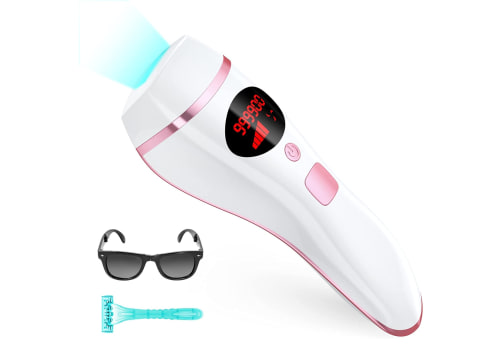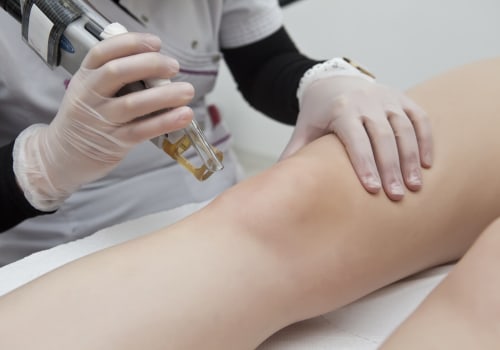Laser hair removal is a popular and effective way to reduce unwanted hair and maintain a smooth, hair-free complexion. But how much time is needed for each treatment area? This article will provide insight into the amount of time you can expect to spend on laser hair removal treatments, giving you a better understanding of what to expect before you book your appointment. The amount of time needed for laser hair removal treatments depends on several factors, including the size of the treatment area, the type of laser used, and the skin color and texture of the patient. Generally speaking, it takes longer to treat larger areas, such as the back or legs, than smaller areas, such as the upper lip or chin. Treatments on lighter skin tones may take less time than those on darker skin tones.
The type of laser used also affects the amount of time needed for a treatment. Devices that use multiple laser wavelengths are often faster than single wavelength lasers. It is important to note that the amount of time needed for a laser hair removal session varies from person to person. A qualified technician will be able to provide you with an estimate based on your individual needs.
Most laser hair removal sessions take between 15 and 30 minutes. For larger areas, the treatment may take up to an hour or more. You may need multiple sessions over a period of weeks or months to achieve desired results. It is important to follow your technician’s instructions before and after each session to ensure optimal results. Your technician may recommend avoiding sun exposure, wearing protective clothing, and using topical creams or ointments before and after your treatment. During a laser hair removal session, you may experience some discomfort.
Most people describe the feeling as similar to an elastic band snapping against their skin. Cooling devices are available to help reduce discomfort. After your session, you may experience some redness and swelling in the treated area. These effects usually subside within a few hours, but they may last up to a few days in some cases.
You should avoid direct sun exposure in the treated area for several weeks after your session. It is important to understand how long each laser hair removal session takes and what to expect during and after treatment. Following your technician’s instructions before and after each session will help ensure optimal results.
Effects After Treatment
After a laser hair removal treatment, you may experience some redness and swelling in the treated area. This is normal and usually subsides within a few hours. If the redness or swelling is particularly bad, you can apply a cold compress or take an anti-inflammatory to help reduce the discomfort.It is important to follow any aftercare instructions provided by your doctor or technician. Although laser hair removal is considered a safe procedure, there are some possible side effects. These include pain, burning, itching, and discoloration of the skin. In rare cases, there may be more serious complications such as scarring, infection, and changes in skin pigmentation. To reduce these risks, it is important to only use experienced, qualified professionals for your laser hair removal treatments.
Expected Discomfort During Treatment
Most people describe the feeling of laser hair removal as similar to an elastic band snapping against their skin.While laser hair removal treatments are generally well tolerated, some people may experience discomfort during the procedure. The degree of discomfort depends on a number of factors, including your skin type, the area of the body being treated, and the type of laser used. Generally, laser hair removal treatments cause a slight stinging sensation, but this should be tolerable. For more sensitive areas like the bikini line or underarms, a numbing cream may be applied beforehand to reduce discomfort.
Your practitioner can also adjust the settings on the laser to make the treatment more comfortable. It is important to keep in mind that laser hair removal is not pain-free, but it should not cause unbearable levels of discomfort. If the treatment is too painful, you should inform your practitioner so they can adjust the settings on the laser.
Before and After Treatment Instructions
Before any laser hair removal treatment, your technician will give you specific instructions to follow. It is important that you follow all instructions to ensure the best possible results.Depending on the area of the body being treated, your technician may recommend avoiding sun exposure, wearing protective clothing, and using topical creams or ointments before and after your treatment. Sun exposure can cause skin irritation and darken the area where the laser hair removal treatment was performed. This can make it more difficult for the technician to accurately target the hair follicles and may lead to an uneven result. Wearing protective clothing can help shield your skin from direct sunlight and other environmental factors that can lead to skin irritation. Your technician may also recommend using a topical cream or ointment before and after your laser hair removal treatment. These products can help reduce inflammation and speed up the healing process.
It is important to follow your technician's instructions to ensure that your skin is properly cared for during and after the laser hair removal session.
Factors that Affect Treatment Time
When considering laser hair removal, it is important to understand the factors that affect treatment time. The size of the treatment area, the type of laser used, and the skin color and texture of the patient all have an effect on how long a laser hair removal session will take. The size of the treatment area is one of the main factors that determine how long a laser hair removal session will last. Smaller areas such as the upper lip or chin can be treated in as little as five minutes, while larger areas like the back or legs may take up to an hour or more.The type of laser used is also an important factor in determining how long a laser hair removal session will take. Different lasers are used to treat different types of hair, so if you are treating more than one type of hair, multiple lasers may be used. This will increase the amount of time needed for treatment. Skin color and texture also affect how long it takes to complete a laser hair removal session.
Darker skin tones require longer exposure times to achieve optimal results, while lighter skin tones require less time. Similarly, thicker skin requires more time to treat than thinner skin. In conclusion, laser hair removal is a safe and effective way to permanently reduce unwanted body hair. However, the amount of time needed for each treatment area depends on several factors, including the size and location of the treatment area, the type of laser used, and the patient's skin type.
It is important to understand how long each laser hair removal session takes and what to expect during and after treatment. Before and after treatment instructions should be followed closely to ensure optimal results, and although some discomfort may be experienced during a treatment session, it is typically minimal. After the procedure, patients may experience some redness or swelling in the treatment area which will usually subside within a few days. With proper care and preparation, laser hair removal can provide lasting results. For those looking for a permanent solution to unwanted body hair, it is worth considering the benefits of this safe and effective treatment.







